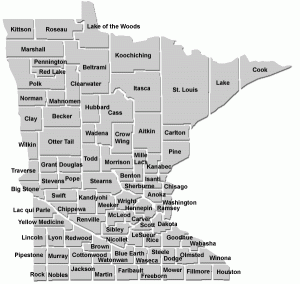Dimension of a Raindrop
A raindrop refers to a small volume of rain, which is completely surrounded by  free surfaces. It is usually formed when there is vapor condensation or when there is an atomization of larger liquid mass. Surface tension can lead to the formation of drops. Whenever it rains, many questions arise from the minds of people, one of which is the dimension of a raindrop.
free surfaces. It is usually formed when there is vapor condensation or when there is an atomization of larger liquid mass. Surface tension can lead to the formation of drops. Whenever it rains, many questions arise from the minds of people, one of which is the dimension of a raindrop.
Raindrop Dimension
On the average, the diameter of a raindrop ranges from 1 millimeter to 2 millimeters. In 2004, the biggest raindrops ever recorded fell in the Marshall Islands and in Brazil. Each drop measured approximately 10 millimeters. According to scientists, a number of factors including caused the large drops such as the condensation on big smoke particles.
In 1898, a Hungarian-German physicist named Philipp Lenard studied the shapes of raindrops. Based on his findings, a small raindrop usually has a diameter smaller than 2 millimeters. The shape of this specific drop size is spherical. Meanwhile, a drop with a diameter of about 5 millimeters commonly has a doughnut-like shape. Once the drop has a diameter bigger than 5 millimeters, the shape becomes unstable.
Additional Facts and Other Interesting Details
Once a raindrop hits the surface of liquid, a kind of sound is produced due to the resonance of excited bubbles, which is somehow trapped underwater. Aside from a raindrop, this sound is also possible to take place in case there is a droplet of water. In terms of shape, a raindrop is usually has a pointy upper end, while the lower end has a circular shape. This is actually caused by a couple of factors, namely the rapid movement of the drop as well as light reflections.
In case a drop falls through gas, the shape becomes spherical. The bottom part of larger drops is flatter because of the pressure produced by the gas as the drop continuously falls down. Raindrops are interconnected with rain, which is a specific type of liquid precipitation. A rain gauge is used to measure precipitation, which is classified into varying rates including extreme rain, very heavy rain and heavy rain. Lower rates of rain include moderate rain, light rain and very light rain.
A rain is classified as extreme when the rate or precipitation is greater than 50mm/hr. A rain is considered very heavy one the precipitation rate falls somewhere from 16mm/hr to 49mm/hr. For heavy rains, the precipitation rate ranges from 4mm/hr to 15mm/hr. For moderate rain, the rate of precipitation ranges from 1mm/hr to 4mm/hr. For light rains, expect the precipitation rate to drop to .25mm/hr to .9mm/hr. Finally, a very light rain has a precipitation rate of less than .25mm/hr.





